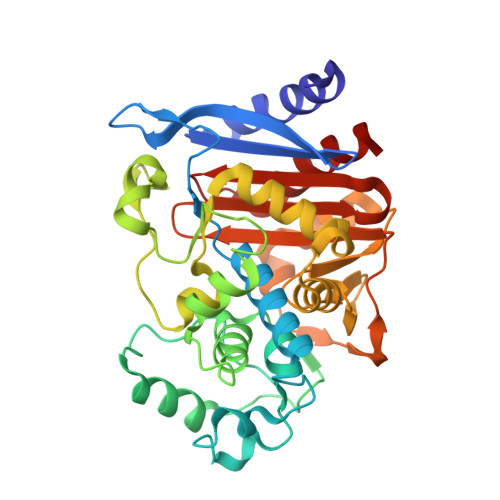Increasing chemical space coverage by combining empirical and computational fragment screens.
Barelier, S., Eidam, O., Fish, I., Hollander, J., Figaroa, F., Nachane, R., Irwin, J.J., Shoichet, B.K., Siegal, G.(2014) ACS Chem Biol 9: 1528-1535
- PubMed: 24807704
- DOI: https://doi.org/10.1021/cb5001636
- Primary Citation of Related Structures:
4KZ3, 4KZ4, 4KZ5, 4KZ6, 4KZ7, 4KZ8, 4KZ9, 4KZA, 4KZB - PubMed Abstract:
Most libraries for fragment-based drug discovery are restricted to 1,000-10,000 compounds, but over 500,000 fragments are commercially available and potentially accessible by virtual screening. Whether this larger set would increase chemotype coverage, and whether a computational screen can pragmatically prioritize them, is debated. To investigate this question, a 1281-fragment library was screened by nuclear magnetic resonance (NMR) against AmpC β-lactamase, and hits were confirmed by surface plasmon resonance (SPR). Nine hits with novel chemotypes were confirmed biochemically with KI values from 0.2 to low mM. We also computationally docked 290,000 purchasable fragments with chemotypes unrepresented in the empirical library, finding 10 that had KI values from 0.03 to low mM. Though less novel than those discovered by NMR, the docking-derived fragments filled chemotype holes from the empirical library. Crystal structures of nine of the fragments in complex with AmpC β-lactamase revealed new binding sites and explained the relatively high affinity of the docking-derived fragments. The existence of chemotype holes is likely a general feature of fragment libraries, as calculation suggests that to represent the fragment substructures of even known biogenic molecules would demand a library of minimally over 32,000 fragments. Combining computational and empirical fragment screens enables the discovery of unexpected chemotypes, here by the NMR screen, while capturing chemotypes missing from the empirical library and tailored to the target, with little extra cost in resources.
- Department of Pharmaceutical Chemistry, University of California, San Francisco , 1700 4th St., Byers Hall, San Francisco, California 94158, United States.
Organizational Affiliation:


















